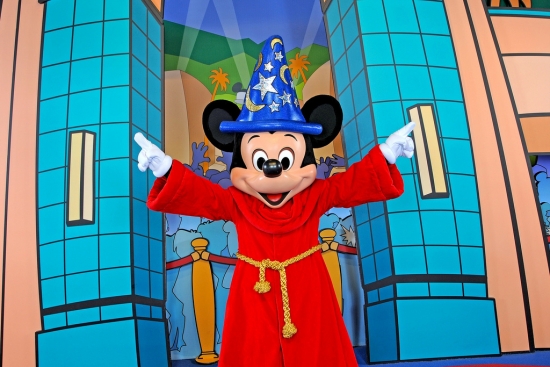With money tight for many families at the moment, a luxury holiday to Florida may not be top of the household agenda for everyone. Yet even at the height of the worldwide financial issues, Disney Parks in all corners of the globe managed to turn fairly respectable profits due to their family friendly settings and appeal for the young and old alike.

After its most successful year to date, however, Walt Disney is looking to make some changes that will make its theme parks even more accessible and personalised for each and every visitor. The company, which increased profits by 18.0 per cent to $5.7 billion last year, will introduce the My Magic + scheme to its Disney World facility which will see the leisure property’s 30 million annual visitors have a more streamlined and enjoyable experience.
The scheme revolves around the use of breakthrough radio frequency identification, or RFID, chips built into wristbands worn by every tourist visiting Disney World. Consumers will be able to purchase food and drink items, pay for entry to various establishments or even pick up souvenirs simply by scanning their bracelets at the kiosks of each stall.
Furthermore, smartphone users can sign up for the accompanying web page and App which will allow them to purchase Fast Track tickets for rides they particularly wish to visit before even leaving their own home. All in all, the wristband is an entrance ticket, Fast Pass, credit card and even a room key for visitors choosing to stay in one of Disney’s on-site hotels.
However, this is not the only aspect of the band designed to revolutionise the world’s most popular theme park chain, as even the smallest child entering the park will also wear a wristband. Should their parent or guardian give consent, basic details such as the child’s name and date of birth will appear in the RFID chip – which can then be read by the costumed characters roaming the park dressed as Disney favourites.
Disney bosses believe that, by having characters interact with their audience by name, the experience will be made more personal and enjoyable for small children visiting the park for the first time.
Of course, Disney is not the first company to use RFID chips in order to streamline visitors’ trips to a theme park or monitor consumer trends using them to better market their products – in fact, North American rivals Great Wolf Resorts have had a similar scheme in place since 2006.
But as Lo-Q chief operating officer Steve Brown points out; “When Disney makes a move, it moves the culture.”
He continues; “If Disney can drive more value from existing infrastructure by layering on technology, that is extremely powerful.
“They can’t just compete by building new rides; it’s already a theme park arms race out there.”
Internationally, Disney is the largest presence in this field of entertainment, with an estimated 121.4 million visitors to its theme parks each year. Revenue totals around $12.9 billion on average, so smaller companies tend to look to the global icon for advancements in technology, entertainment and marketing.
Chairman of Disney Parks and Resorts, Thomas O. Staggs, explains the reasons for this radical overhaul of traditional payment and interaction methods.
He says; “If we can enhance the experience, more people will spend more of their leisure time with us.
“The bands themselves will contain no personal identifiable information – but small, subtle things can make a big difference.”
Do you think the idea of the “Magic Bands” will catch on with consumers worldwide, or do you think issues such as personal information concerns and unwillingness to enter a credit card number into a chip will hold back the crowds? Would you be willing to enter information such as your name and date of birth, or those of your child, in order to make the day more interactive or is the idea a little too “Big Brother” for your liking?
Previous Post
Commercial Properties Must Display EPCs under New Rules